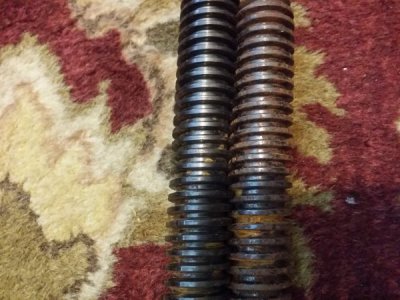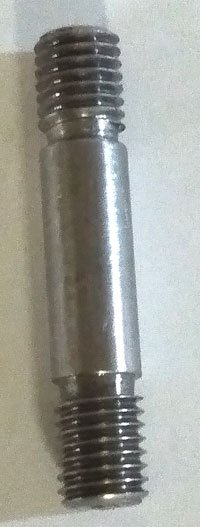I looked at these threaded rods, looks like acme thread. I was curious about cutting an internal nut for it. So I thought with standard threads, putting two rods together side by side would line up the threads perfectly.
I tried these and to my surprise, they don't.
The threads don't sink all the way to the bottom. I then tilted one a little and it worked. I wonder if rust has anything to do with it. Probably not though.
I tried these and to my surprise, they don't.
The threads don't sink all the way to the bottom. I then tilted one a little and it worked. I wonder if rust has anything to do with it. Probably not though.




